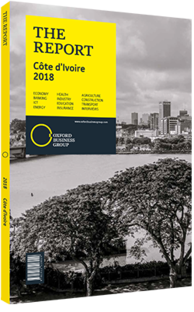Investments made in factory expansion in Côte d'Ivoire due to cement shortage
Côte d’Ivoire has faced a shortage of cement since early 2015, as a result of rapid growth in construction activity when large-scale investment returned to the country after 2011. Demand for cement – and therefore its pricing – is also highly seasonal, leading to particular supply pressures between January and May, the dry season when most construction takes place. The seasonality of construction projects usually coincides with the cashew and cocoa harvest, resulting in a lack of transport capacity during those months, as well.
The country’s humid climate also makes it difficult to store cement for long periods of time, meaning companies cannot build up stocks during periods of high availability. Even so, Simon N’Goh, network officer at Professionels du Ciment et des Matériaux, a distribution system established by Lafarge Holcim Côte d’Ivoire, told OBG that local cement producers have struggled to find land on which to build storage facilities.
Moreover, in early 2017 producers pointed out that congestion around the Port Autonome d’Abidjan – Côte d’Ivoire’s primary port – was hindering transactions with distributors during the peak period, bringing about a particularly acute supply crunch.
Stepping Up Imports
In response to the shortage, in April 2017 authorities announced the urgent importation of an additional 150,000 tonnes of cement between April and July, following a similar move in 2015 to import an extra 300,000 tonnes. Cement imports through the port in Abidjan have grown from 221,400 tonnes in 2014 to 494,100 in 2015 and 741,600 in 2016. Imports of cement via the country’s second port, the Port Autonome de San Pedro, stood at 256,200 tonnes in 2015, the latest data available as of early 2018. This was up slightly on 248,900 tonnes in 2014, but much more than the 194,200 delivered in 2013.
Looking ahead, demand for cement appears to remain strong, with a range of construction and national infrastructure projects under way or in the pipeline (see overview). According to N’Goh, cement consumption has been growing between 8% and 10% annually in recent times, and is forecast to continue to expand at a similar rate in coming years, as projects under government initiatives take form.
Capacity Increase
Imports to supply projects are set to fall in the near future, though, as hurdles at the port and transporter level dissipate and new capacity at local facilities come online to boost national production. One of the country’s major producers, Moroccan firm Les Ciments de l’Afrique, opened a 1m-tonne per annum (tpa) facility in San Pedro in November 2017, built at a cost of CFA35bn (€52.5m). Capacity at the plant will be expandable to 2m tpa in the future. The firm announced plans to follow this in 2019 with another plant in Bouaké, with an initial capacity of 500,0000 tpa, expandable to 1m tpa. The cost of that facility is estimated at CFA25bn (€37.5m). The company has been rapidly growing its local production, having launched its first facility in Côte d’Ivoire in 2013 at Abidjan, which had an initial capacity of 500,000 tpa. This figure was doubled to 1m tpa in June 2016.
LafargeHolcim Côte d’Ivoire has also been stepping up its production capacity. In May 2017 the firm acquired a new grinder, bought at a cost of CFA15bn (€22.5m), which has doubled maximum output at its factory in Abidjan from 1m tpa to 2m tpa. Furthermore, in August 2016 Nigerian firm Dangote Cement announced plans to build a 3m-tpa grinding plant. However, industry figures told OBG in mid-2017 that it was unclear if construction of the plant was going ahead.
According to the Association of Cement Producers of Côte d’Ivoire, the country’s annual cement demand is around 3.6m tones, while production capacity reached 4.15m tones in 2017 as a result of the expansions. While recent projects may prove sufficient in reducing the pressure on availability and bringing down cement prices, N’Goh told OBG he believes a price war is likely to occur in 2018, as the capacity upgrades push supply ahead of demand for the first time in several years.
You have reached the limit of premium articles you can view for free.
Choose from the options below to purchase print or digital editions of our Reports. You can also purchase a website subscription giving you unlimited access to all of our Reports online for 12 months.
If you have already purchased this Report or have a website subscription, please login to continue.

